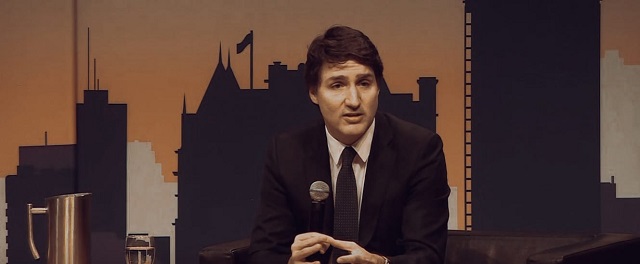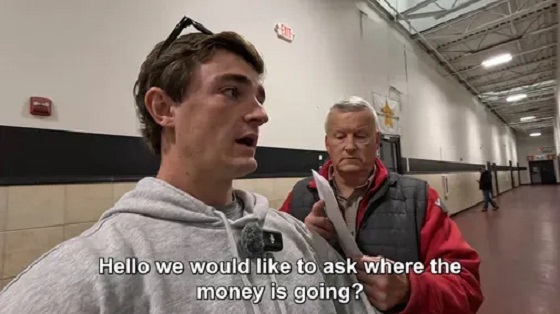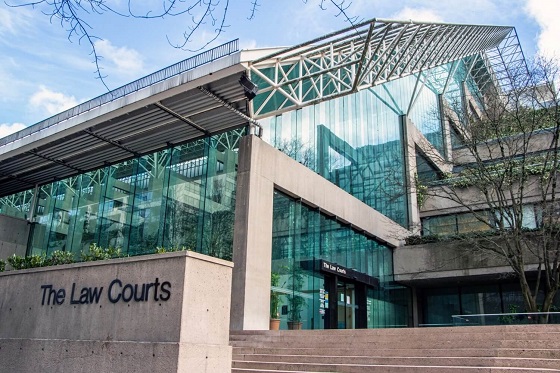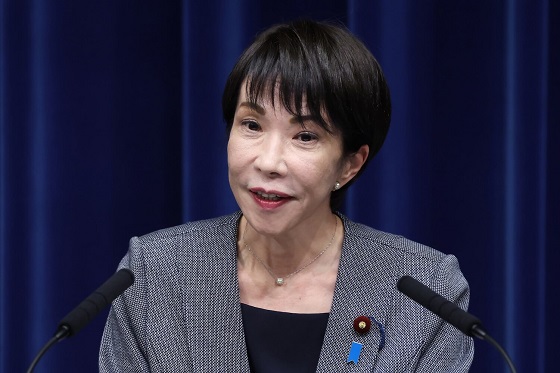Opinion
Trudeau’s Winnipeg Whitewash – A Masterclass in Diversion and Disconnection

From The Opposition with Dan Knight
As Canada grapples with soaring housing costs and a quality of life crisis, the Prime Minister’s narrative on immigration & multicultural success stories clashes with the lived realities of Canadians
As some of you enjoyed the comfort of Family Day, perhaps some of you noticed Justin Trudeau making the rounds in Winnipeg – (Justin Trudeau Fireside Chat at Winnipeg Chamber of Commerce – February 16, 2024), where he found quite the fan in Loren Remillard of the Winnipeg Chamber of Commerce. It seems Remillard was all too eager to extend a metaphorical hand, fishing for tax dollars to prop up their projects.
Oh, let’s dissect the masterful art of political deflection and diversion, shall we? Justin Trudeau, spun a narrative so disconnected from the reality Canadians live in, it’s almost an art form. He lauds Toronto and Vancouver as paragons of multicultural success, cities thriving under the weight of their diversity. But here’s the catch folks—the reality on the ground, as reported by Stats Canada, tells a story that’s anything but rosy for the residents of these supposed utopias.
When we turn our gaze to the real impact of his government’s immigration policies on the ground, the picture is starkly different. Toronto and Vancouver, the benchmarks of Trudeau’s immigration success story, are in fact cities where residents report a lower quality of life than their provincial counterparts. Why? Because amidst the fanfare of diversity and inclusion, the basic needs of the citizens—like feeling a sense of belonging, life satisfaction, and mental health—are being sidelined.
Let’s not forget the elephant in the room Trudeau casually mentioned—2 million temporary residents flooding into Canada. This isn’t just a number; it’s a tsunami of demand in addition to the Liberal 500k target per year of permanent resident hitting a housing market already gasping for air, driving rents and shelter costs to astronomical heights. And Trudeau’s response? A shrug of the shoulders and a diversion to talk about measures with Mexico or the plight of international students. While these issues merit attention, they dance around the core issue: a government more obsessed with its global image than the welfare of its citizens.
The audacity to claim that Toronto and Vancouver are thriving under his policies, while Stats Canada directly contradicts this with evidence of declining quality of life, is nothing short of political theater. It’s a sleight of hand designed to distract from the harsh reality—that his government’s approach to immigration and temporary residents is contributing to a crisis of affordability and well-being in our major cities.
But amidst the spectacle, Trudeau touched on a subject that should raise eyebrows across the nation: On how his government is using immigration as a tool to “grow the economy.” Now, let’s pause for a moment to digest that, shall we?
Diving deeper, a fascinating exchange caught my ear during a Finance Committee meeting FINA-124 -February 1, 2024, where Tiff Macklem of the Bank of Canada offered some candid insights. When prodded by Mr. Jasraj Singh Hallan, Macklem conceded that the government’s spending spree and the Bank’s efforts to stabilize our economy were essentially at loggerheads. Here we have the Trudeau administration, pushing fiscal policies that seem to sprint in the opposite direction of monetary sanity.
Macklem went on, outlining that yes, government spending is contributing to growth, but let’s be clear about the kind of growth we’re talking about here. It’s one that barely keeps pace with population increases, teetering on the edge of potential. And with government spending poised to climb even higher, we’re flirting dangerously close to exacerbating inflation, rather than reining it in.
Senior Deputy Governor Carolyn Rogers chimed in with a stark reminder of the housing market’s woes. Despite interest rate hikes, which traditionally cool down housing prices, Canada’s chronic housing shortage keeps prices stubbornly high. The result? A housing affordability crisis that’s squeezing Canadians tighter than ever, exacerbated by an immigration policy that is throwing fuel on the fire of demand without addressing the urgent need for supply.
This is the picture Trudeau’s policies paint for Canada: a nation where the cost of living climbs ever higher, where the dream of homeownership slips further away for the average citizen, and where economic growth strategies seem disconnected from the realities on the ground. It’s high time for a reality check, a moment to ask ourselves whether these policies truly serve the best interest of Canadians or merely the political agenda of those in power.
Indeed, the root of the issue is staring us right in the face—supply problems are driving costs through the roof. Yet, it seems as though there’s a conspiracy of silence in the House of Commons; no one dares to utter the truth that unchecked immigration is exacerbating these supply woes, sending shelter costs soaring. Let’s dive into the latest from Stats Canada to unravel the narrative everyone is thriving under Justin Trudeau.
First off, let’s talk about renters. According to this report, if you’re renting, your quality of life isn’t just on the lower rung; it’s plummeting. Renters are staggering under the weight of financial pressures unheard of for homeowners, feeling the pinch of record-low vacancy rates and rent hikes that would make your head spin. Over 15 percentage points more likely to struggle financially and over 11 points less likely to experience life satisfaction.
But the plot thickens when we look at the younger Canadians, those aged 15 to 54. They’re caught in a vise, with life satisfaction and mental health scores that trail behind their older counterparts. The dream of home ownership? A mirage for many, as they navigate a landscape where the very idea of paying off a mortgage seems like a relic of a bygone era. And let’s not even get started on the economic tightrope walked by residents of Toronto and Vancouver, cities where the cost of living soars as high as the skyscrapers dotting their skylines.
Now, Trudeau’s government might have you believe that policies are in place to bridge these divides, to bolster the quality of life for all Canadians. But let’s be real—the evidence suggests otherwise. With renters and younger generations buckling under financial strains and cities like Toronto and Vancouver becoming enclaves of the unaffordable, the narrative being spun by the current administration seems more fiction than fact.
Consider the financial strain laid bare by these statistics: a significant portion of Canadians are finding it increasingly difficult to meet their financial needs, with shelter costs consuming a lion’s share of their income.
In a landscape marked by disparities in quality of life we’re left with a pressing question: where does the path forward lie?
Let’s cut to the chase, folks. The latest 338 polling data isn’t just a blip on the political radar; it’s a resounding bell tolling for the end of the Liberals’ reign, inching closer to losing their official party status. Why, you might ask? It’s simple: Justin Trudeau’s legacy is one of profound ineptitude, a legacy that has systematically failed Canadians at every turn. When Trudeau touts his housing policies, claiming to increase rentals, remember the cold, hard facts from Stats Canada—he’s not building homes; he’s crafting a nation with a diminished quality of life. That’s the Trudeau vision for Canada.
And let’s not overlook the audacity of his actions—jetting off to Jamaica with a hefty $162,000 bill footed by you, the taxpayer. It seems Trudeau’s concern for your quality of life evaporates faster than a Liberal MP can devour lobster in Malaysia. Meanwhile, ordinary Canadians are left to scrounge at food banks. But hey, as long as the political elite get their fill, right?
SNC-Lavalin was just the beginning, the canary in the coal mine signaling the avalanche of corruption set to spill out from Trudeau’s government. WE Charity, the Trudeau Foundation, Chinese interference, ArriveScam… the list of scandals under Trudeau’s watch is as long as it is disgraceful. These aren’t mere footnotes in history; they’re the defining features of his tenure.
Remember the uproar over a $16 orange juice under Harper? That was considered the height of scandal, a benchmark of accountability. Fast forward to today, and this government can’t even spell ‘ethics,’ let alone practice it.
So, my fellow Canadians, as we look ahead to the next election, we’re presented with a golden opportunity—a chance to reset the narrative and send a clear message to the liberal elites that we’ve had enough of their disdain for the average citizen. I, for one, will be cheering on the red wedding of Canadian politics because the liberal standard is not just detrimental to your well-being; it’s an affront to all of Canada. It’s time to say enough is enough and reclaim the Canada we know and love—a Canada of integrity, accountability, and true north strong and free.
Business
Stripped and shipped: Patel pushes denaturalization, deportation in Minnesota fraud

FBI Director Kash Patel issued a blunt warning over the weekend as federal investigators continue unraveling a sprawling fraud operation centered in Minnesota, saying the hundreds of millions already uncovered represent “just the tip of a very large iceberg.”
In a lengthy statement posted to social media, Patel said the Federal Bureau of Investigation had quietly surged agents and investigative resources into the state well before the scandal gained traction online. That effort, he said, led to the takedown of an estimated $250 million fraud scheme that stole federal food aid intended for vulnerable children during the COVID pandemic.
According to Patel, the investigation exposed a network of sham vendors, shell companies, and large-scale money laundering operations tied to the Feeding Our Future case. Defendants named by the FBI include Abdiwahab Ahmed Mohamud, Ahmed Ali, Hussein Farah, Abdullahe Nur Jesow, Asha Farhan Hassan, Ousman Camara, and Abdirashid Bixi Dool, each charged with offenses ranging from wire fraud to conspiracy and money laundering.
Patel also said Abdimajid Mohamed Nur and others were charged in a separate attempt to bribe a juror with $120,000 in cash. He noted that several related cases have already resulted in guilty pleas, prison sentences of up to 10 years, and nearly $48 million in restitution orders.
Despite those outcomes, Patel warned the case is far from finished.
“The FBI believes this is just the tip of a very large iceberg,” he said, adding that investigators will continue following the money and that the probe remains ongoing. Patel further confirmed that many of those convicted are being referred to immigration authorities for possible denaturalization and deportation proceedings where legally applicable.
The renewed focus follows a viral video circulated by independent journalist Nick Shirley, which appeared to show multiple childcare and learning centers operating as empty or nonfunctional storefronts. The footage sparked immediate backlash from Republicans, including Vice President JD Vance.
House Majority Whip Tom Emmer accused Minnesota Gov. Tim Walz of sitting idle while massive sums were stolen from taxpayers. Walz addressed the allegations during a November press conference, before the full scope of the fraud became public, saying the scandal “undermines trust in government” and threatens programs meant to help vulnerable residents.
“If you’re committing fraud, no matter where you come from or what you believe, you are going to go to jail,” Walz said at the time.
Authorities say the alleged schemes date back to at least 2015, beginning with overbilling Minnesota’s Child Care Assistance Program and later expanding into Medicaid-funded disability and housing programs. One such housing initiative, aimed at helping seniors and disabled residents secure stable housing, was shut down earlier this year after officials cited what they described as large-scale fraud.
The fallout has already reached the federal level. Last month, President Trump announced the suspension of Temporary Protected Status for Somali nationals, arguing that Minnesota had become a hub for organized welfare fraud and money laundering activity.
Business
Mainstream media missing in action as YouTuber blows lid off massive taxpayer fraud

Vice President JD Vance is giving public credit to a YouTube journalist for doing what he says legacy media and elite institutions have failed to do: follow the money in Minnesota. In a post on X, Vance praised independent reporter Nick Shirley for digging into alleged fraud networks tied to the state, saying Shirley “has done far more useful journalism than any of the winners of the 2024 Pulitzer prizes.” The comment was a direct response to a video Shirley shared online documenting what he described as widespread fraud, with Shirley claiming his team identified more than $110 million in suspicious activity in a single day while confronting facilities allegedly receiving millions in public funds.
Shirley’s reporting has been circulating widely among conservatives, with commentators amplifying clips of him visiting supposed daycare and education centers that appeared inactive despite receiving massive federal aid. Conservative media personality Benny Johnson said Shirley had exposed more than $100 million in Minnesota Somali-linked fraud routed through fake daycare and healthcare fronts, adding to the pressure on state leadership. The issue gained further traction after Tom Emmer, Minnesota’s top House Republican, demanded answers from Gov. Tim Walz following a viral clip showing Shirley confronting workers at an alleged daycare in South Minneapolis. Shirley reported the center, called the “Quality Learning Center,” showed no visible activity despite claims it served up to 99 children, and even misspelled “learning” on its signage. As Shirley approached, a woman inside was heard shouting “Don’t open up,” while incorrectly accusing him of being an ICE agent.
🚨 Here is the full 42 minutes of my crew and I exposing Minnesota fraud, this might be my most important work yet. We uncovered over $110,000,000 in ONE day. Like it and share it around like wildfire! Its time to hold these corrupt politicians and fraudsters accountable
We ALL… pic.twitter.com/E3Penx2o7a
— Nick shirley (@nickshirleyy) December 26, 2025
The controversy builds on earlier reporting from City Journal, which published a November investigation citing federal counterterrorism sources who said millions of dollars siphoned through Minnesota fraud schemes had been sent overseas, with some of the money allegedly ending up in the hands of Al-Shabaab. One confidential source quoted in the report bluntly claimed, “The largest funder of Al-Shabaab is the Minnesota taxpayer.” Since that report, the scrutiny has widened inside the Trump administration. Treasury Secretary Scott Bessent has announced that the Treasury Department is examining whether Minnesota taxpayer funds were diverted to terrorist-linked groups, while Education Secretary Linda McMahon has publicly called on Walz to resign amid separate allegations of large-scale education fraud within the state’s college system.
Taken together, the attention from Vance, congressional Republicans, and multiple federal agencies has elevated Shirley’s reporting from viral internet content to a flashpoint in a broader debate over fraud, accountability, and the role of independent journalists. For the vice president, the message was clear: real accountability sometimes comes not from prize committees or press rooms, but from outsiders willing to ask uncomfortable questions and stand in front of locked doors with a camera rolling.
-

 Business2 days ago
Business2 days agoLargest fraud in US history? Independent Journalist visits numerous daycare centres with no children, revealing massive scam
-

 Business2 days ago
Business2 days ago“Magnitude cannot be overstated”: Minnesota aid scam may reach $9 billion
-

 Business21 hours ago
Business21 hours agoWhat Do Loyalty Rewards Programs Cost Us?
-

 Business9 hours ago
Business9 hours agoLand use will be British Columbia’s biggest issue in 2026
-

 Censorship Industrial Complex2 days ago
Censorship Industrial Complex2 days agoUS Under Secretary of State Slams UK and EU Over Online Speech Regulation, Announces Release of Files on Past Censorship Efforts
-

 Haultain Research21 hours ago
Haultain Research21 hours agoSweden Fixed What Canada Won’t Even Name
-

 Business7 hours ago
Business7 hours agoMainstream media missing in action as YouTuber blows lid off massive taxpayer fraud
-

 Energy10 hours ago
Energy10 hours agoWhy Japan wants Western Canadian LNG



